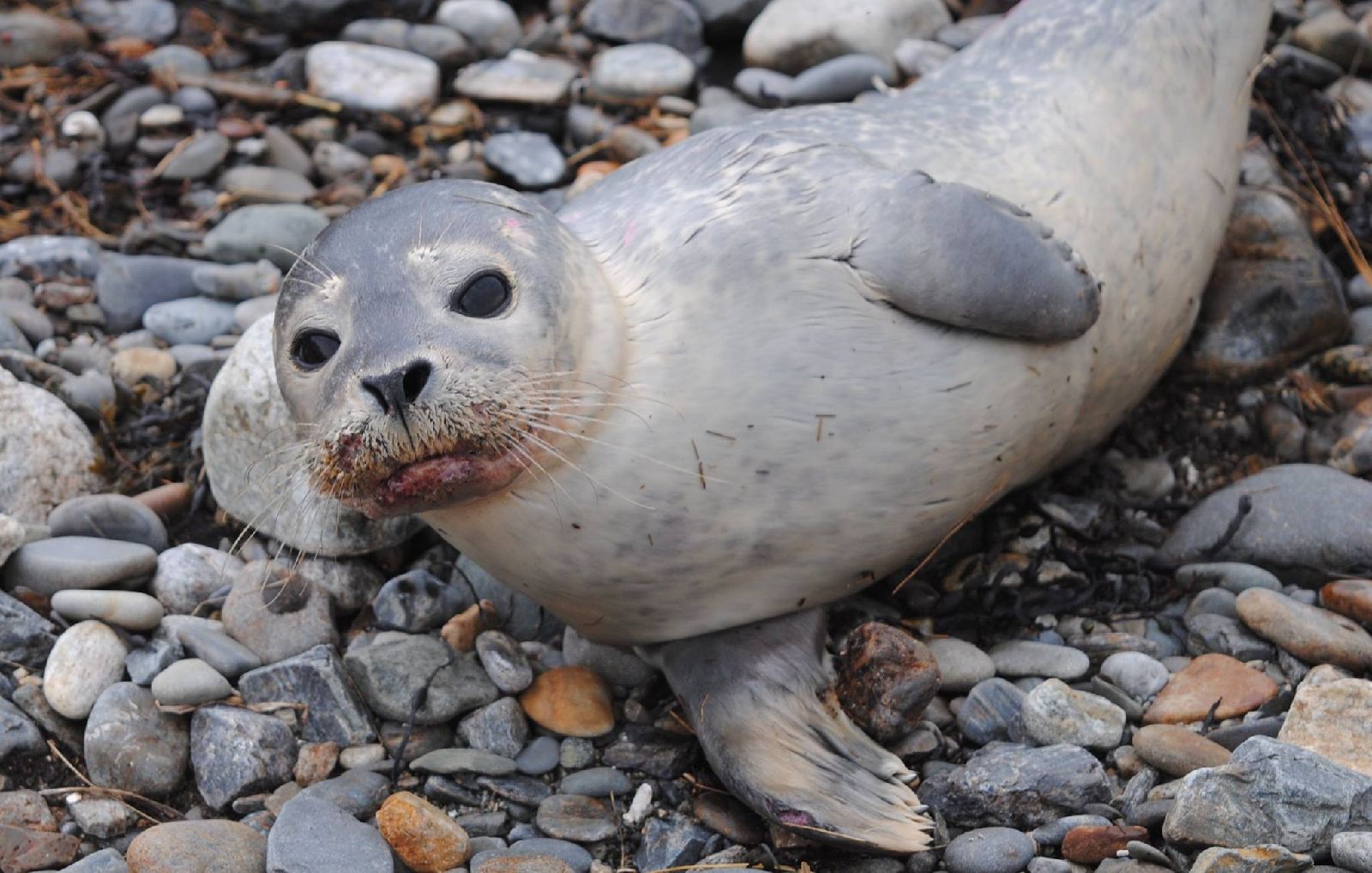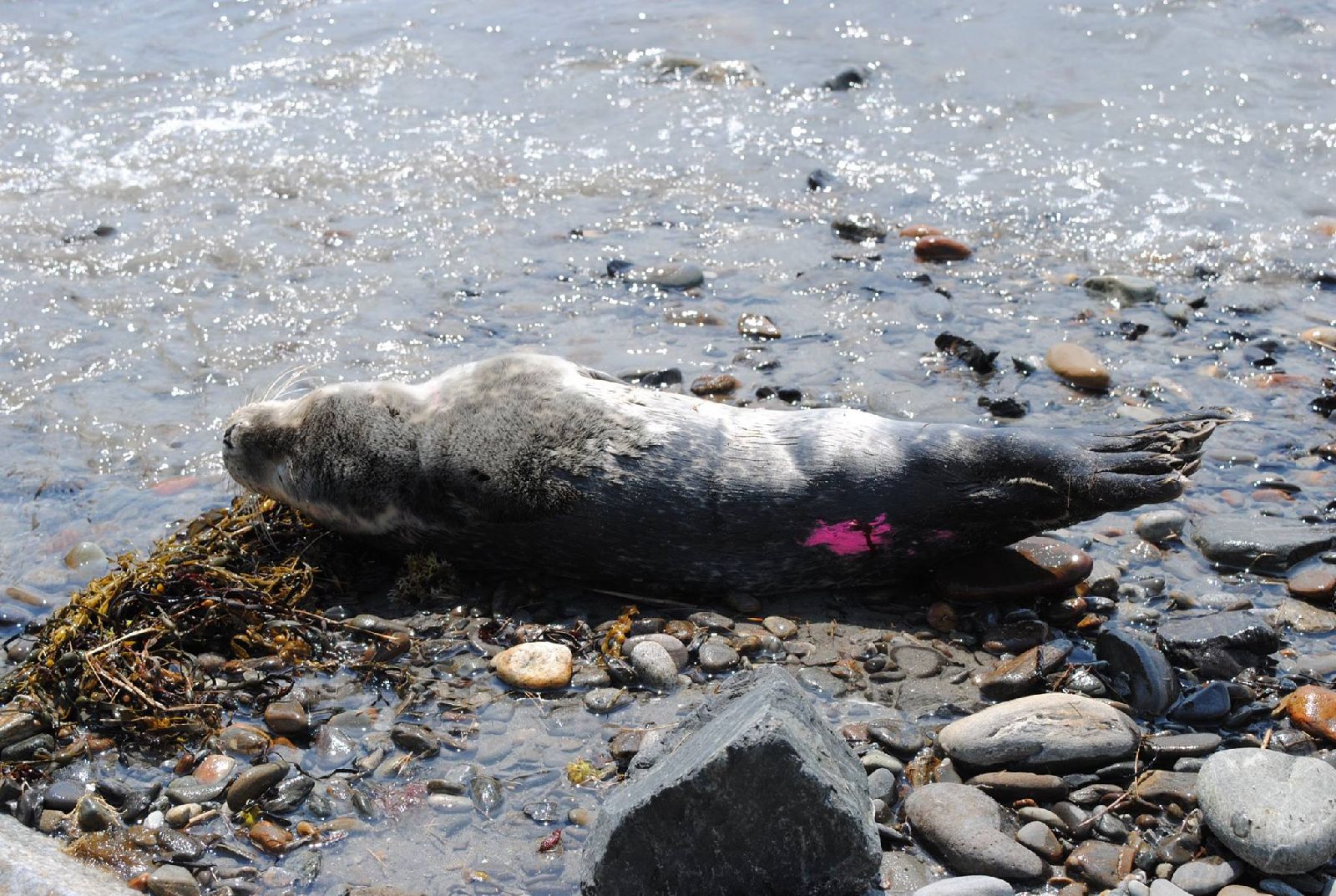News Posts List
Latest News from the Marine Mammal Rescue Team August-Dec. 2015
08/01/2015
December 12, 2015
Oregano the harbor seal first to be released in NH!
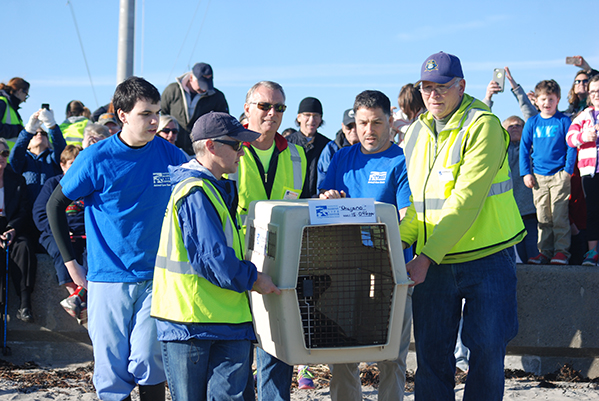 |
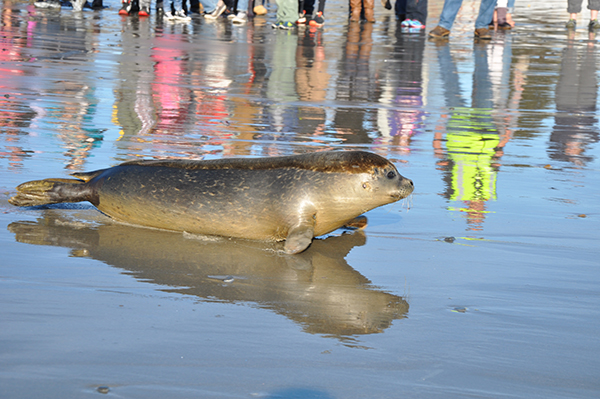 |
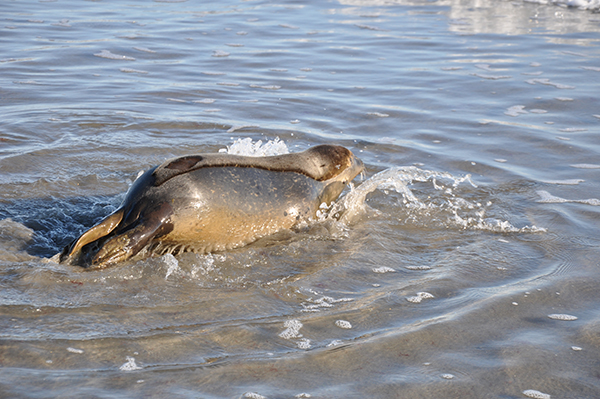 |
.jpg) |
On Saturday, December 12th, Oregano the harbor seal was released back into the wild at Wallis Sands State Park in Rye. A cheering crowd of approximately 350 people came out to witness the joyous event and support our marine mammal rescue and ocean education efforts!
Oregano was rescued from Seabrook Beach on October 3rd and transported to the National Marine Life Center for much needed care (see story below). After 2 months, Oregano fully regained his health and went from a thin 30 pounds to over 70 pounds!
Watch the video of Oregano's release and see more photos on our Marine Mammal Rescue Team facebook page.
Special thanks go to the National Marine Life Center for bringing Oregano back to NH for us to celebrate his swim back into the big blue!
We are only able to rescue seals like Oregano because of your generosity! We rely on contributions from our community to respond to all marine mammals that haul out or strand on NH's beaches. Your tax-deductible donation will ensure we stay ready to respond.
October 29, 2015
Oil spill response drill
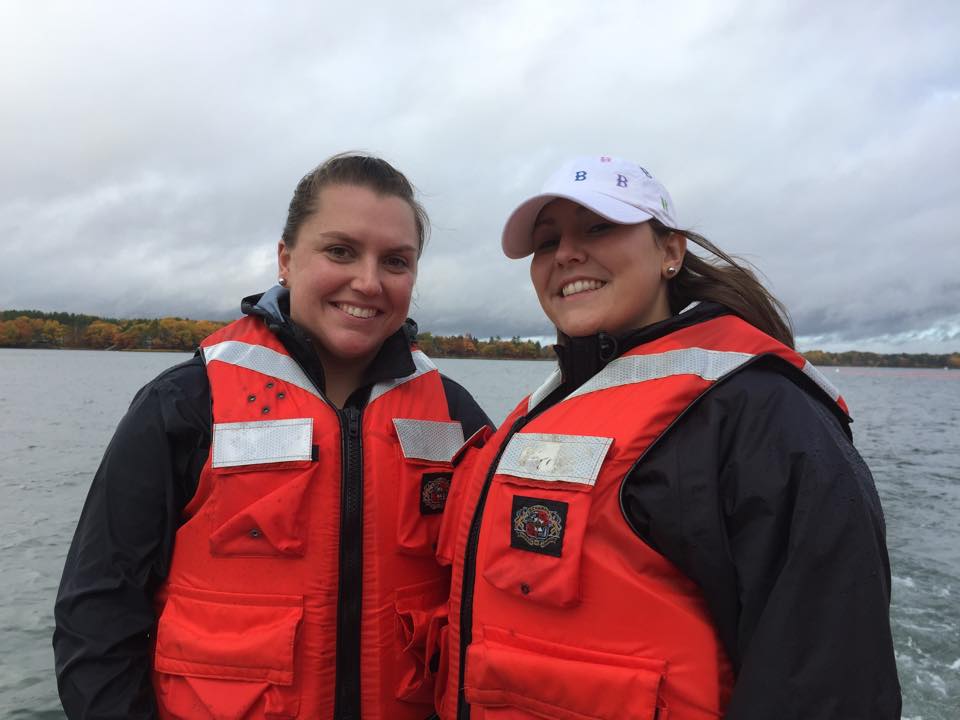 |
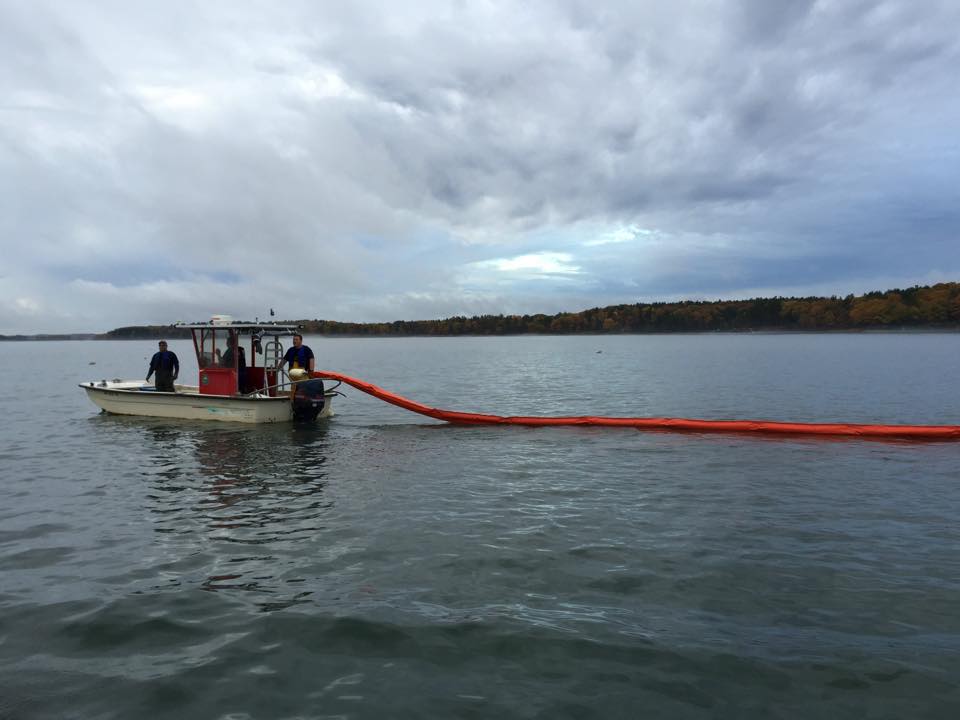 |
MMRT Coorindator Ashley Stokes and Assistant Sarah Toupin joined NH Department of Environmental Serivies, the US Coast Guard, and other environmental contractors on Little Bay for an oil spill response boom strategy drill. The response team practices the drill annually to be better prepared if an oil spill were to occur in the area. During this drill, they deployed 6,000 feet of boom. Ashley and Sarah observed the drill aboard the DES vessel Healy to begin training to prepare to respond to marine mammals in need of rescue in the event of a spill.
October 7, 2015
Chamomile released!
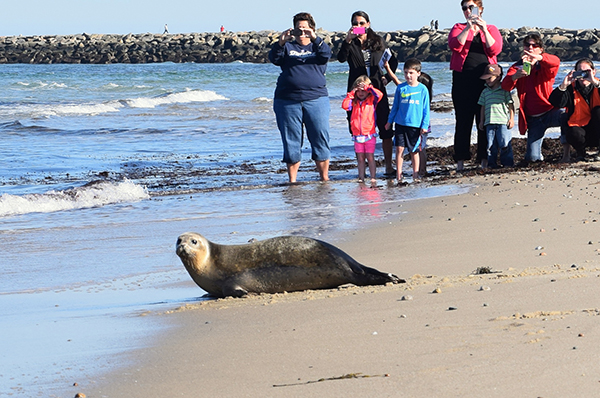 |
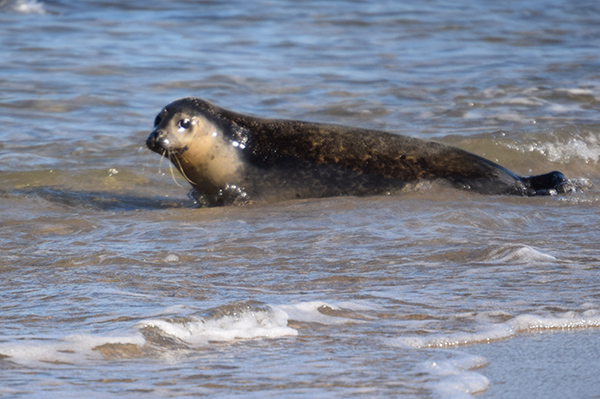 |
Yesterday afternoon a few members of our team travelled down to Bourne, MA to see Chamomile, rescued by MMRT in July, released. The National Marine Center released three seals that were rehabilitated under their care. Chamomile, along with two other harbor seals that were rescued by Marine Marine Mammals of Maine swam off into the big blue at Scusset Beach State Reservation in MA. Chamomile was rescued by our team at the end of July when she was struggling with a swollen abscessed front flipper, a respiratory infection, and some smaller wounds on her head, neck, and hind flippers.
Swim fast and free Chamomile, Sage, and Rue!!
October 6, 2015
A challenging rescue!
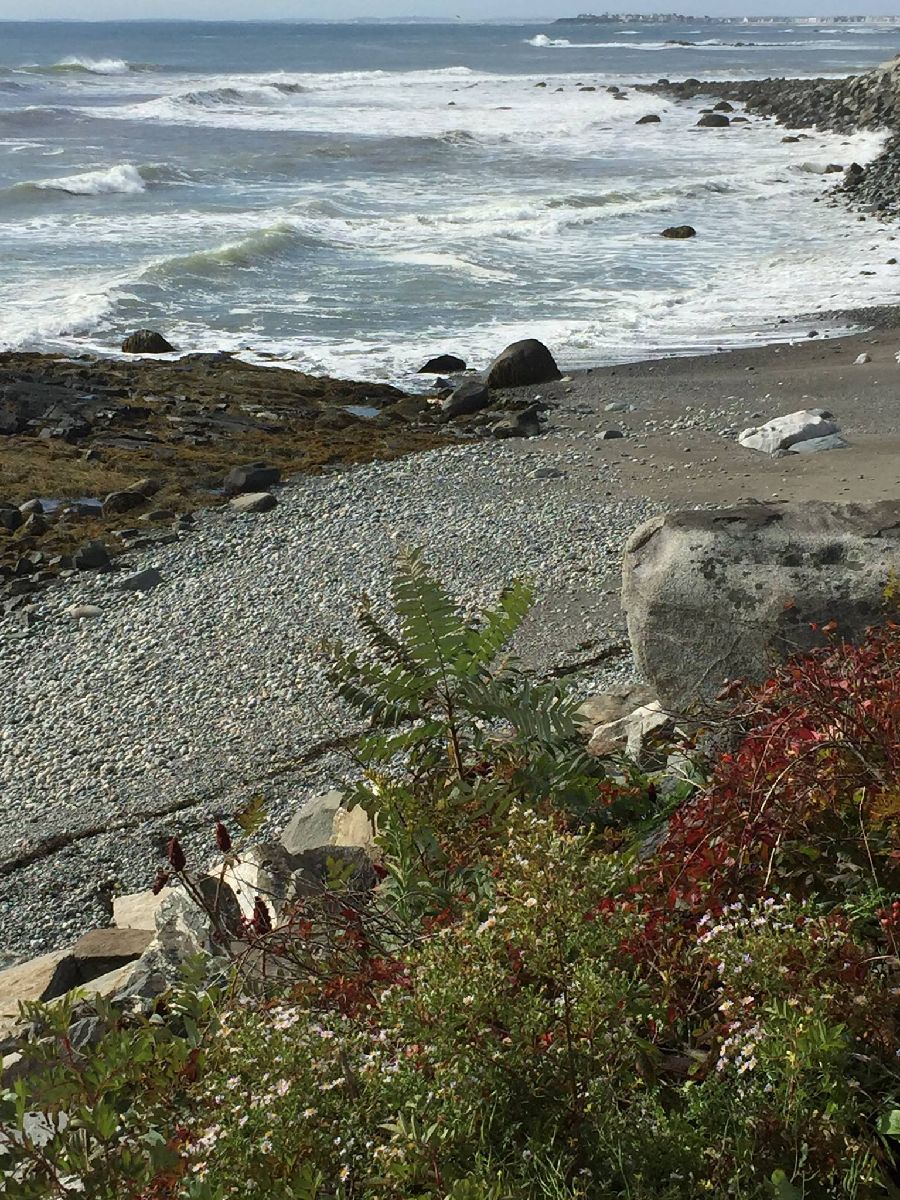 |
.jpg) |
Yesterday morning, October 5th, we removed an injured harbor seal weanling from North Hampton, NH. This little guy is lucky he was spotted by a passer-by, as the location was down a steep rocky cliff so he was luckily seen from a far distance away! Can you spot him on the photo on the left? He is in thin nutritional condition and was suffering from multiple large wounds. When we arrived he was also being picked on by seagulls, so we moved quickly to remove and transport him for rehabilitation with our friends at Mystic Aquarium.
October 3, 2015
Seal comes back ashore and is rescued
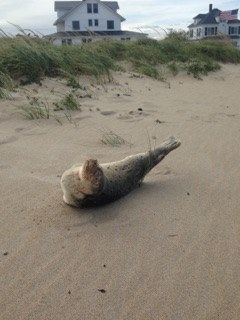 |
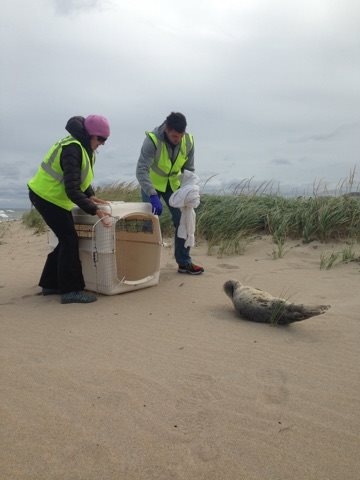 |
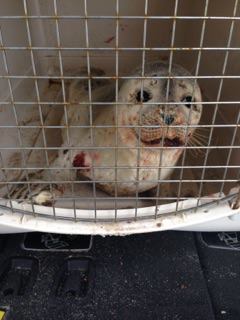 |
The strength of these young seals never cease to amaze us! The seal that we responded to in Rye on Friday morning, showed up again at the southernmost end of Seabrook Beach early Saturday morning! It took us a little while to realize that it was the same seal, because we didn't think that it would have travel that far in the large waves and in such a short period of time! The seal was located up at the edge of the marsh grass and the sand all around it was undisturbed; so it likely had been there since the night before. We picked the seal up and transported it to NMLC for rehab, as it had a flipper wound, body lesions, and a respiratory infection. We are hoping for the best; he is in pretty tough shape.
Thank you to the reporting party, the team members that helped out, and for the hospitality by people that live there!
P.S. This seal was named Oregano by the National Marine Life Center once he arrived at their facitlity for rehabilitation.
October 2, 2015
Orange is the new black?
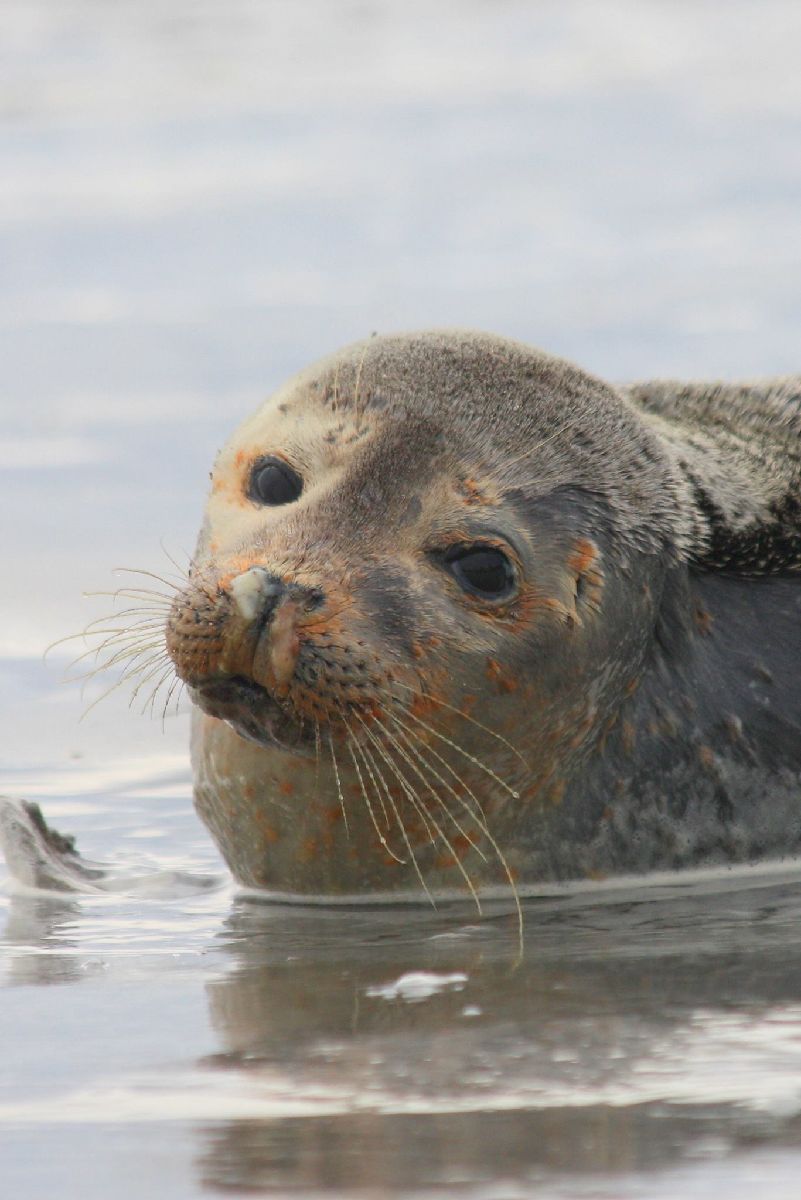 |
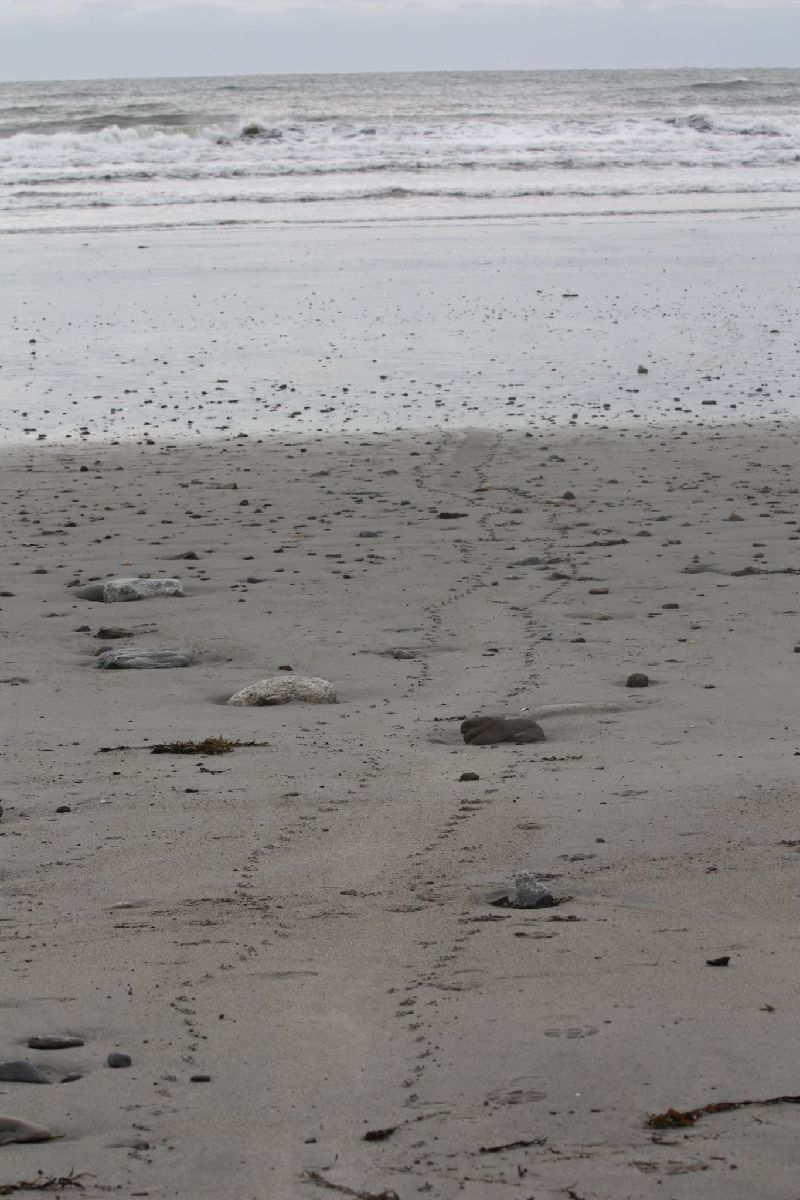 |
This morning we responded to a weanling harbor seal on the northern end of Jenness Beach in Rye. It was "BAR" (bright, alert, and responsive) but was on the thin side and has an upper respiratory infection (sneezing and evidence of discharge from the nostrils). It had made its way close to the waters edge when staff arrived, and only stayed about 30 minutes after that. Once the tide turned and began coming in, it immediately decided to head back into the ocean. A special thank you goes out to everyone that reported that seal this morning.
It is evident in this photo that the seal is alert and responsive. You can see, however, that it does have some small abscesses on the body and discharge from the nose. The orange/rust coloring on the fur can either be algae that has dried on the animal or old fur that is ready to molt. In the photo on the right, you can see the distinctive "seal tracks" in the sand from dragging its belly and using the claws on its front flippers to inch down the beach toward the surf.
If you are in the area of Jenness Beach and spot a live seal, please call the hotline at 603-997-9448. We have also had a busy week with deceased animals. Please report all sightings of live or deceased animals at all locations, as soon as they are spotted.
October 2, 2015
You go girl!!
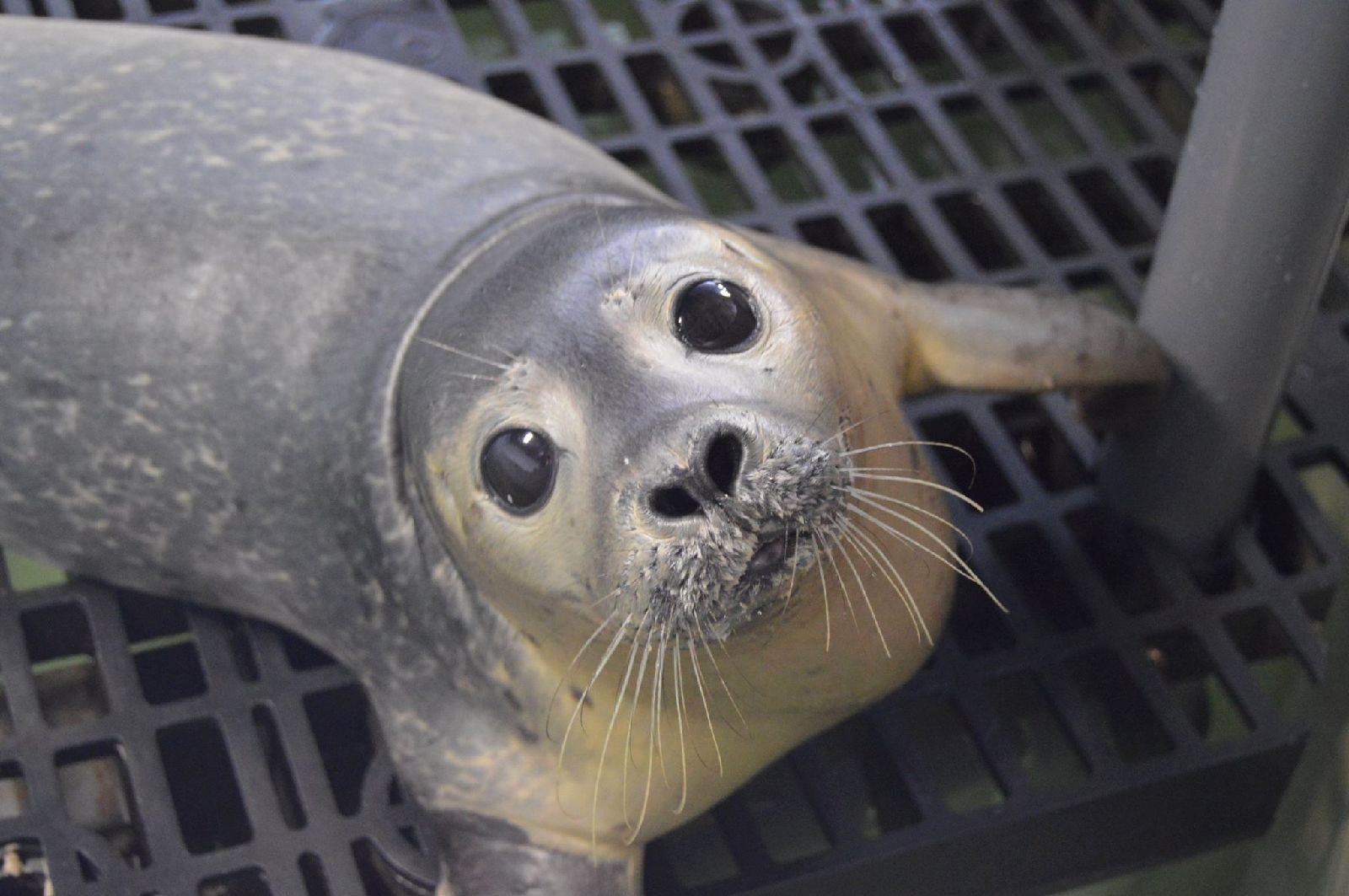 |
.jpg) |
Chamomile, rescued by our Team on July 25th from North Beach in Hampton, is being released on Wednesday, October 7th at Scusset Beach State Resvervation in Sandwich, MA!! All are welcome to attend. The release will be at 3:00 pm.
When we rescued Chamomile, she was struggling with a swollen abscessed front flipper, a respiratory infection, and some smaller wounds on her head, neck, and hind flippers. She was only 24 pounds and is now tipping the scale at 75 pounds! Props to eveyone at the National Marine Life Center for providing Chamomile's much needed health care and rehabilitation. (Photos by NMLC)
September 25, 2015
Bite Wound Seal doing well in rehab
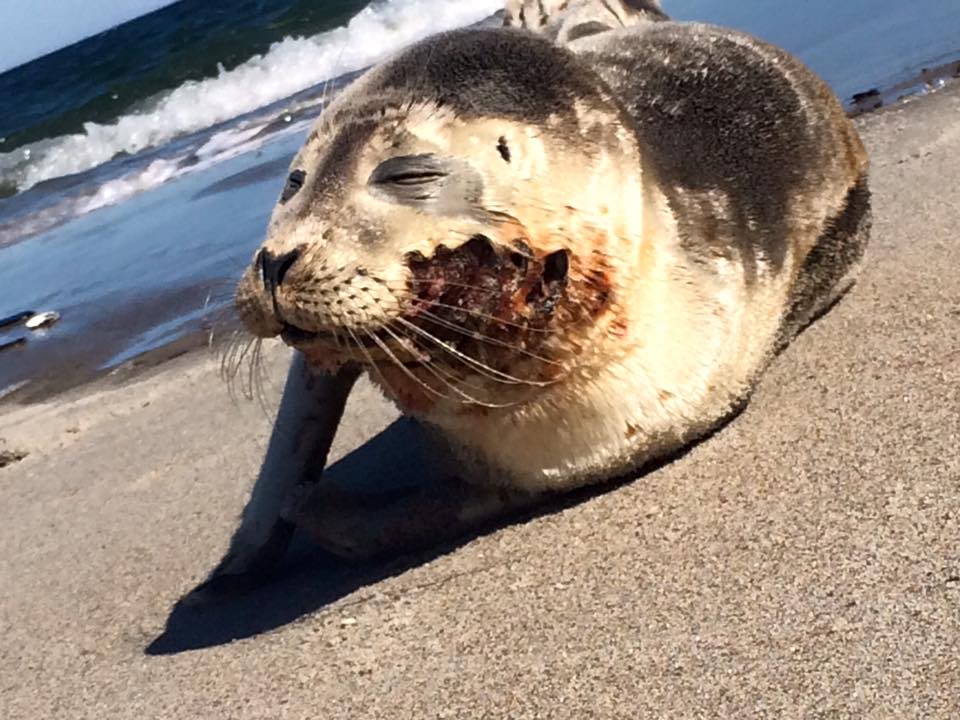 The team rescued this female weanling harbor seal from Crane's Beach in Ipswich, MA on Septebmer 25th. She was "BAR" (bright, alert, and responsive) and her overall body condition was pretty good, despite the obvious, severe predation wound to the face, as seen in this photo. She was taken to rehabilitation and is now receiving much needed care from our friends at Mystic Aquarium, to which she is reponding well.
The team rescued this female weanling harbor seal from Crane's Beach in Ipswich, MA on Septebmer 25th. She was "BAR" (bright, alert, and responsive) and her overall body condition was pretty good, despite the obvious, severe predation wound to the face, as seen in this photo. She was taken to rehabilitation and is now receiving much needed care from our friends at Mystic Aquarium, to which she is reponding well.
September 4, 2015
Off to Rehab
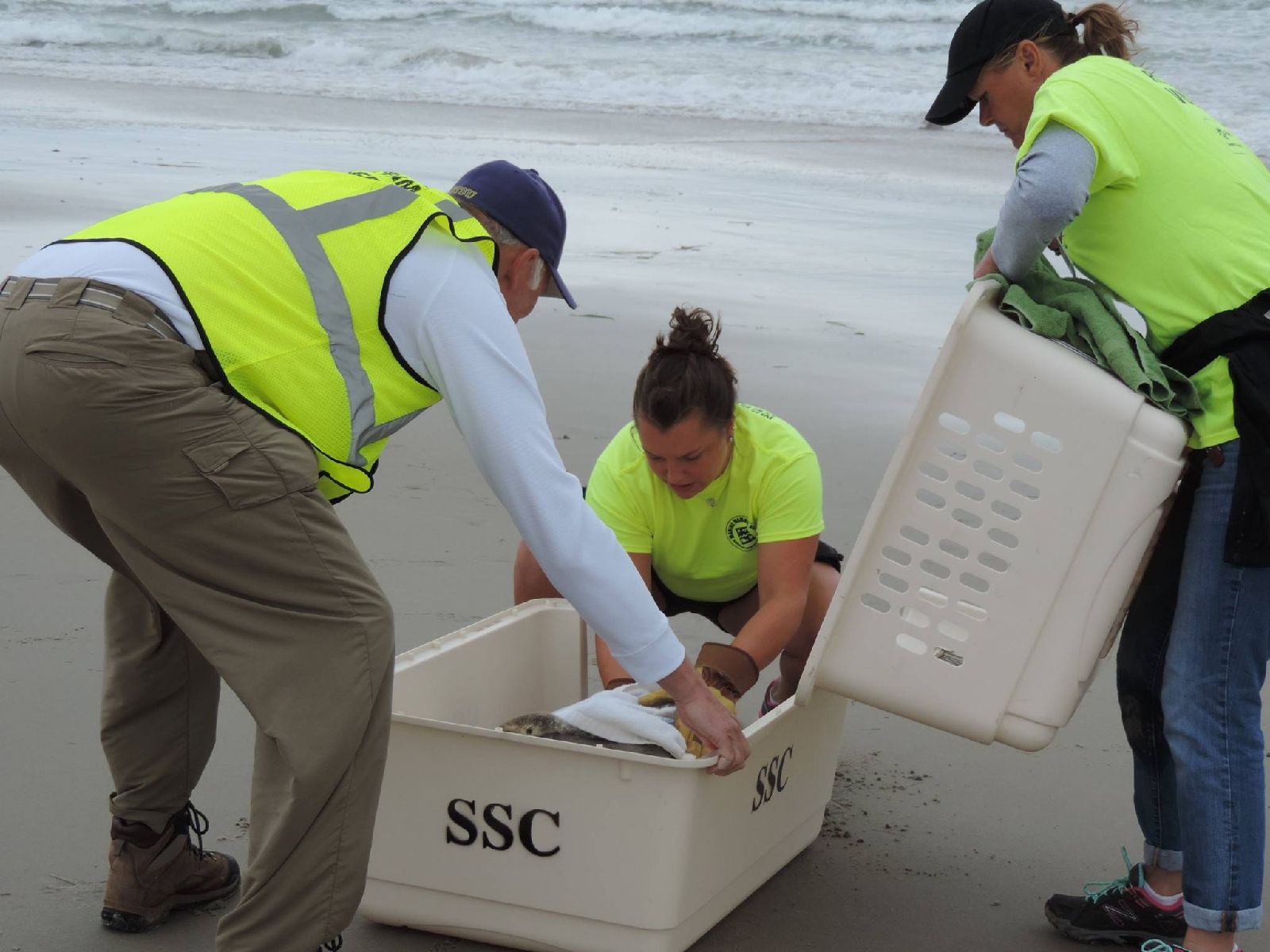 |
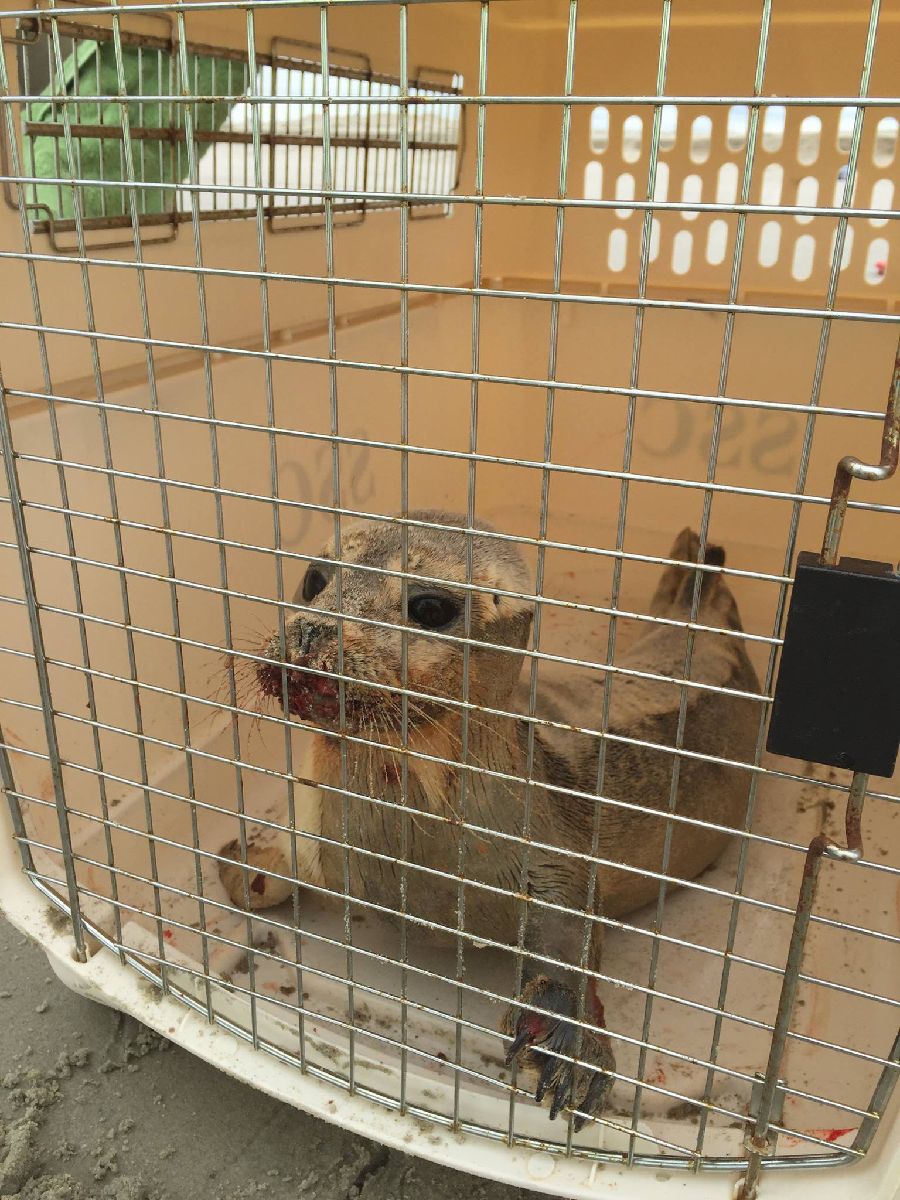 |
This morning, our team removed this weanling harbor seal from Seabrook Beach who was transported Mystic Aquarium for rehab. As you can see in the photos, his lower lip has many lacerations and he has a few abcesses/lesions on his flippers and body. It's likely that this is the same animal we received calls about at the end of August, who had eluded us until now. Thank you to everyone who called the hotline to alert us of his whereabouts. Thank you also to the team members who assisted in getting this little guy off for much needed help.
September 3, 2015
Keep Back, Call the Hotline!
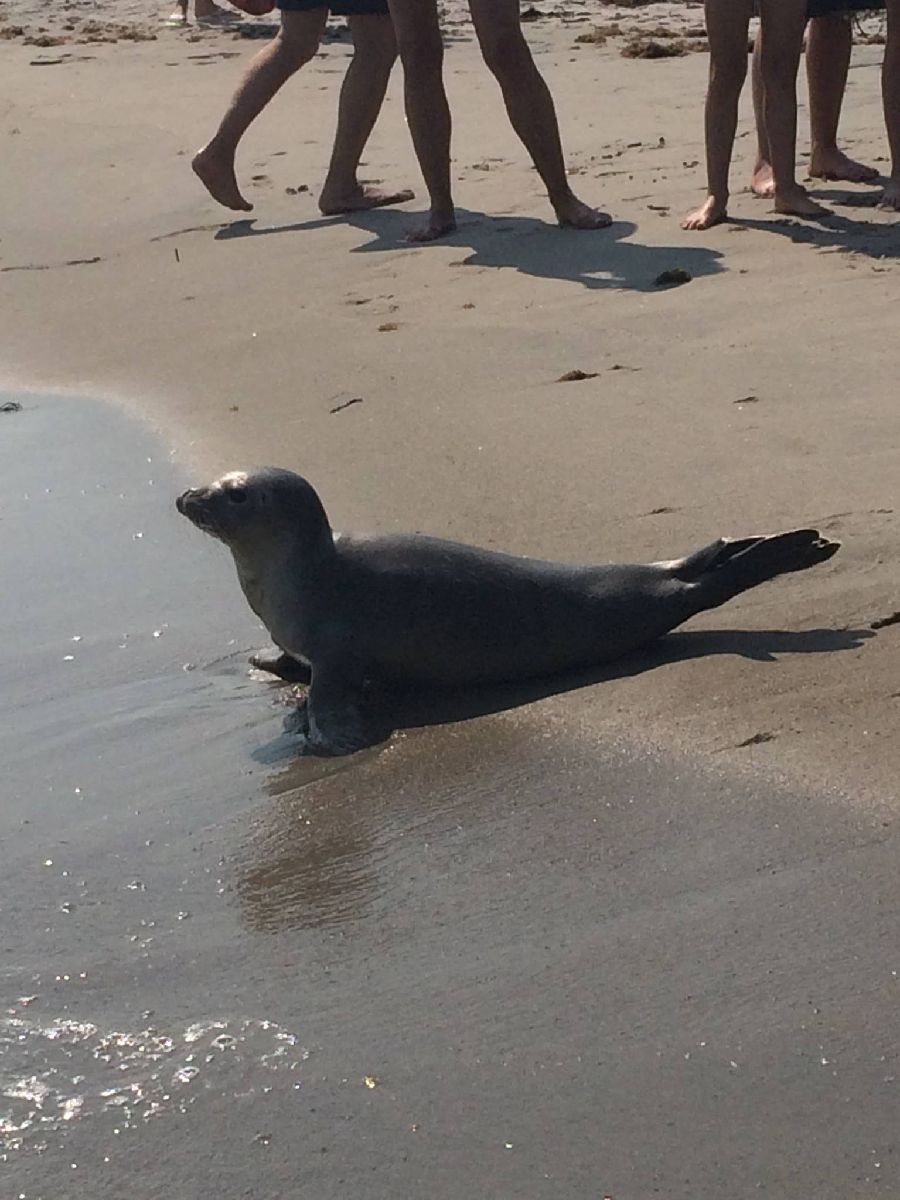 |
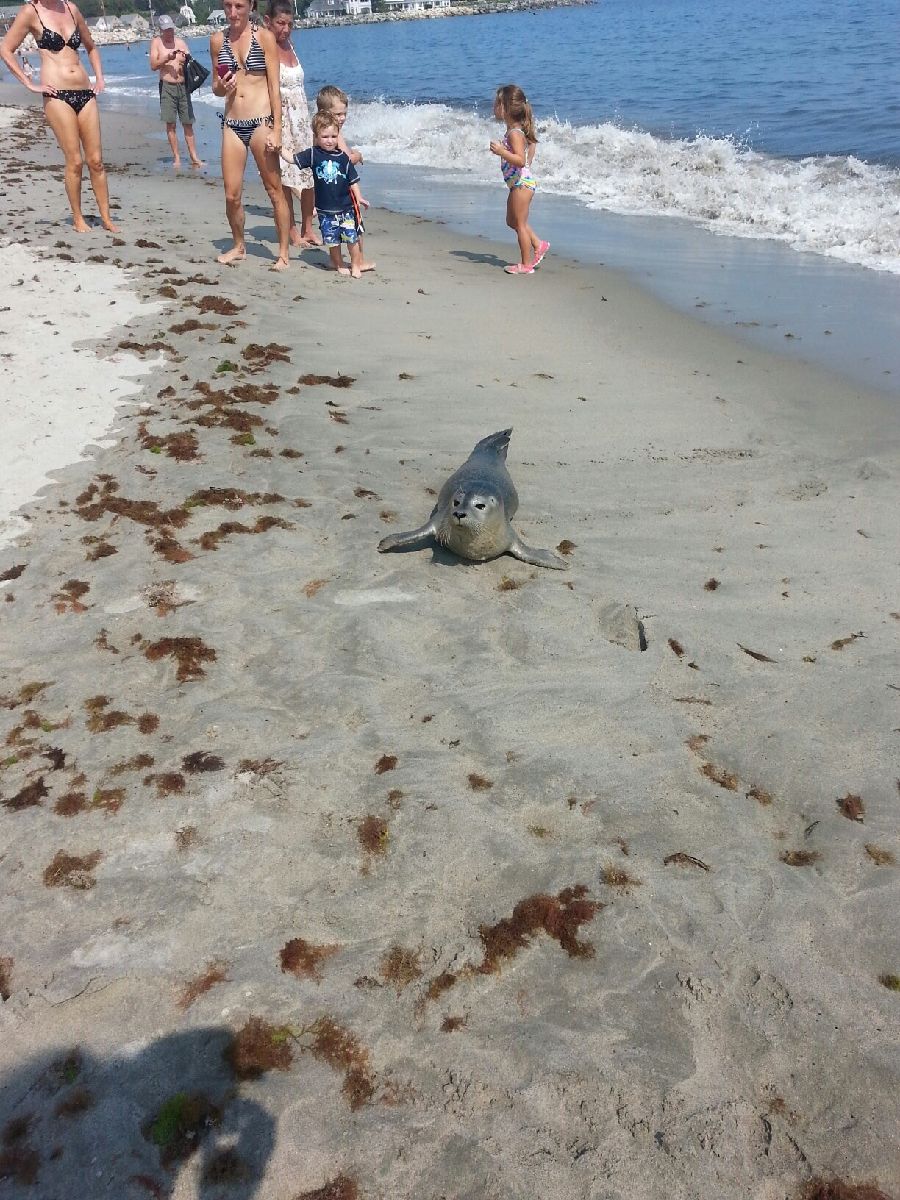 |
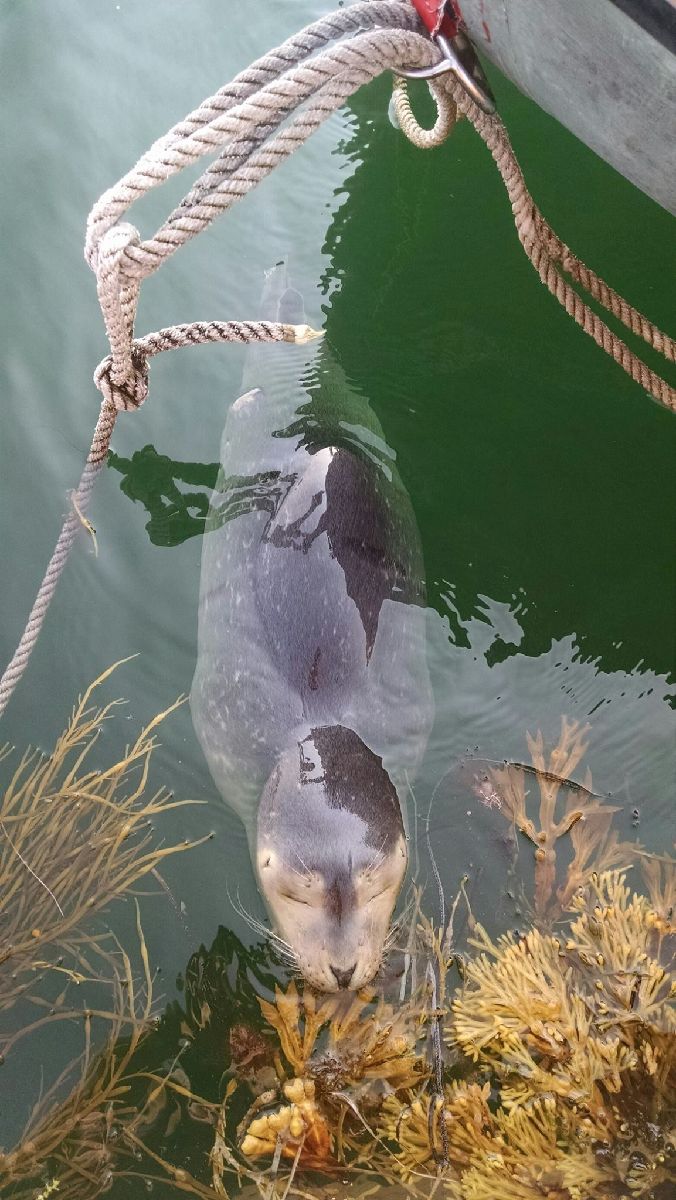 |
Yesterday, September 2nd, we reponded to two live harbor seal weanling reports. The first seal was on North Hampton State Beach. By the time the report came into the hotline (30+ minutes after the seal hauled out), several people had approached the seal, someone poured water on it, and another tried to touch it, leaving it no choice but to retreat to the water. This was an unfortunate incident that could have been averted if the seal was reported right away. The seal was not given the space it needed to haul out and rest. It is important to remember that seal are wild animals that will bite when provoked.
The second weanling, shown in the third photo, was out at Star Island, Isles of Shoals. The staff at the Shoals monitored the animal for us. Although it had a wound on it's right hip, the seal was no longer in the area this morning.
August 27, 2015
Rise in Diseased and Deceased Seal Cases

We have been very busy with an influx of seal calls over the last couple days. Many of them have been in Hampton and a few have been in North Hampton and Rye. We are working hard to respond to them as quick as possible and then requesting the towns to remove them. We are looking into any consistencies in the cases, but it's very possible that these carcasses are washing in as a result of the storm and higher than normal surf the last few days.
August 6, 2015
Marine Mammal Rescue Team Sees Jump in Cases
By Liz Miller hamptonunion@seacoastonline.com Posted Aug. 6, 2015 at 2:59 PM
see story on seacoastonline.com
RYE – The Seacoast Science Center’s Marine Mammal Rescue Team has handled 64 cases in the year to date – twice as many as in the same timeframe in 2014. In all of 2014, the Marine Mammal Rescue Team saw 73 cases. “We’re likely to exceed that number this year,” Marine Mammal Rescue Coordinator Ashley Stokes said. “It’s definitely significantly busier than usual.” In July alone, the team handled 32 cases, three times the normal average. Though they’ve not yet been able to pin down a single cause behind the increase in numbers, storm activity early on in the summer season could have separated young seals from their mothers and contributed, Stokes said.
The team most often encounters weanlings – seals that were born this May and June and are no longer dependent on their mother. So far this year, the team has found 17 live and 15 deceased. Often, weanlings found “didn’t quite learn everything they were supposed to from mom,” Stokes said, a condition she calls “failure to thrive.” Unable to successfully forage for food, they become tired more easily and start hauling onto the beach for rest. With a lack of proper nutrition, the small and thin animals are more likely to pick up infections, Stokes said.
Hauling out onto the beach is not a definitive sign that a seal is in need of help, however. Seals, unlike whales or dolphins, are semi-aquatic and are comfortable out of the water – they’ll come out to sleep, nurse, or to soak up the sun when they’re healthy. Still, it’s always a good idea to call the Marine Mammal Rescue Team’s hotline and report the animal’s location, size, coloring and behavior if one is seen on shore.
“The more people that call, the better,” Stokes said, noting observers occasionally assume someone else already has. The team cautions people to stay at least 150 feet away and not doing anything to disturb the seal – a simple tip that could make the difference between life and death for an animal.
After a seal is found, it’s left on the beach and monitored for 24 to 48 hours in order to determine whether it needs to be taken into rehabilitation. Seals are either taken to the Mystic Aquarium in Connecticut or the National Marine Life Center in Bourne, Mass., long drives that take a toll on the animals and are avoided unless truly necessary.
“A lot of this program is about education,” Stokes said. A staff member or volunteer is always nearby when an animal is on the beach – both to keep an eye on the animal’s condition and to educate beachgoers. It’s a “very public” program, which raises awareness amongst the community about the role of the Marine Mammal Rescue Team and the existence of the Seacoast Science Center, she said.
The program receives some federal funding, but the amount has recently been decreased, and thus the Seacoast Science Center is looking for donations. “We’re always letting the public know that they can help,” Stokes said. To learn more about the Marine Mammal Rescue Team and how to donate, visitwww.seacoastsciencecenter.org.
August 4, 2015
Weanling mouth
Yesterday afternoon, we responded to this young female weanling harbor seal at Rye Harbor State Park. She was very alert and responsive to noises, but was a little thin, and she has what we call "weanling mouth". Weanling mouth is seen in many 'young of the year' harbor seals. It seems to occur in thin seals because their immune systems are suppressed. The bacteria that they pick up in their mouth causes sores which can get infected. This particular seal had an advanced case of weanling mouth, but otherwise was on the healthier side of what we have been seeing lately. We decided to give her the rest of the day, to see how her health was progressing. We marked her back, near her tail, with pink grease stick that will stay on for close to 2 weeks. Yesterday evening one of our field responders saw her swim out of the harbor and back into open ocean and this morning she was not found in the area. The pink grease stick will help us identify her, if she hauls out anywhere else in the area! Give us a call at 603-997-6448 is you spot her.

